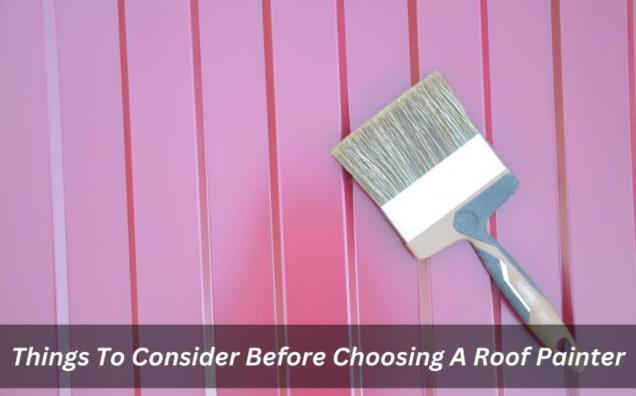
Don't Get Soaked! Winter Roof Leak Prevention
Why winter can be risky for your roof
Winter, on the other hand, brings in a set of different tests to the ever-reliable roof of your house. Here's what you need to be aware of:
- Uneven snowmelt and ice dams: However, snow melting is not uniform, particularly in regions characterised by snowfall. This results in the formation of Ice Dams—a condition where ice forms at the edge of your roof, especially beneath the melting snow. This trapped water can back up under the shingles and leak into your home.
- Freeze-thaw cycles and material wear: Freezing and subsequent thawing of the roof during the winter is always a disaster because it affects the different materials on the roof. Water also tends to expand when in a state of freezing; it can penetrate through the usual areas of chinks and gaps and find its way into the shingles, flashing, and the rest of the roof's components to bring in leaks with it.
- Increased risk of clogged gutters: Other items such as leaves, needles, seeds, twigs, and other wastes possibly left in your gutters will pile up and freeze in cold seasons. This creates barriers that confine rainwater and melting snow away from freely draining, hence the tendency to aggravate and back under the roof.
Many homeowners do not know they can still be accustomed to leakages, even if it snows outside.
- Visible water damage inside: This is the most common sign I want to emphasise, but you should take action immediately. Scrutinise the roof in areas with dampness on ceilings or walls, especially at the eaves, the flat part of the roof that joins the walls of a building.
- Unexplained mould growth: Mold thrives in humid conditions. If mould appears on the walls, floors, or even the ceiling of the house, especially if it was not there before, it might be a sign of a leak that is still dormant.
- Rising energy bills: Weather can affect roof damage, and a rotten roof can quickly warm your home faster, raising energy bills as heaters are used more.
- Ice buildup at eaves: As stated above, ice dams can be a primary source of leakage in buildings and homes during winter. If there is more than 5cm of ice on your roof eaves, it is recommended that you apply for an inspection by a roofing contractor.
As the old saying goes, it is better to prevent than cure, especially in roof leakages. Here are some simple steps you can take to keep your roof in tip-top shape this winter:
- Schedule a pre-winter roof inspection: It is beneficial to arrange for a professional roofer to visit your home to assess the roof's condition before winter since there might be issues with the shingles, flashings, or seals. Most of the time, it is best to catch a problem early and repair it before it becomes an even bigger issue to deal with in the future.
- Clear your gutters and downspouts: This might sound obvious, but it is essential to get your gutters and downspouts cleaned well and free of leaves, debris, or ice before winter sets in. This helps enhance proper drainage in case of melting snow or rainwater.
- Ensure proper attic ventilation: Proper ventilation of your house, especially the attic, reduces humidity, which causes water to form and results in leakage. Attic vents should always be cleared and checked to ensure they work as required.
- Address existing roof damage (missing shingles, cracked flashing): Do not ignore any problem that may already be present and affecting the roof, whether it’s a minor one or not. Mention that small issues gradually become significant splits that are even more susceptible to leakage in winter.
- Consider roof insulation upgrades (for heat retention): Appropriate insulation can help eliminate ice dams from formation because when the surface of the roof is warmed to let the snow melt through, the rest of the areas are also heated adequately.
Advanced winter roof leak prevention strategies
For those looking for an extra layer of protection, here are some advanced strategies to consider:
- Install roof vents or snow guards (for specific concerns): There are roof vents for ventilation, while snow guards, which also discourage ice dams, prevent large chunks of snow from sliding down in a single mass. However, these solutions may only be relevant for some roofs, so consult a professional to determine their appropriateness.
- Explore heated roof systems (in extreme climates): Heated roof systems are possible in regions with very much rainfall. They install electrical cables in the roof to warm the water and evaporate the ice and snow. However, they are relatively expensive, and professional installation and maintenance are needed to keep them working correctly.
- In non-invasive leak detection for early identification: If you believe your leak is still unresolved, consider contacting a plumber for a non-invasive leak search. This can include thermography, moisture meters, or sound leakage tests to identify leaks without penetrating your roof. Search for companies using those innovative techniques to obtain Sydney's most efficient roof leak repairs.
It does not have to be Winter when people fear roofing leaks. Here are some ways to shield your home from the wet season and some of the things you should know about it: It is recommended to perform a pre-winter check to knock out the projects that should be done around the house without professional help but feel free to consult with a specialist for more complicated troubles. Thus, properly managing your roof helps you get Through cold winter nights and enjoy the fireplace, not a leak on the ceiling. Therefore, put on your favourite winter jumper, a mug of hot chocolate, and, equally important, a mind at peace knowing that your roof is leak-free and that you’re actively preventing long-term roof damage.



